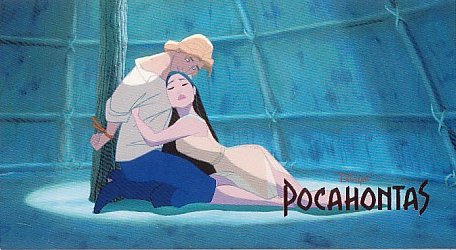We can make all the difference in combatting stereotypes. We developed this inspirational video that will soon make its debut at future presentations and lectures.
Native American women
Like any other cultural minority, Native Americans are traditionally portrayed as biologically and morally inferior to the more civilized white Americans. This concept of inferiority extends to word-use and connotation. The curious concept of squaw is still debatable whether it is an acceptable or derogatory term to refer to Native American women. Mostly from what the media has been trying to feed the public, squaw has become a derogatory term for these minority women. From its original or aboriginal concept that means "women," the word squaw evolved to refer to the female reproductive organ and thus became synonymous to vagina ("White Beauty: A Content Analysis of the Portrayals of Minorities in Teen Beauty Magazines" & "Reclaiming the Word "Squaw" in the Name of the Ancestors").
Movements have been made to reclaim the word squaw is of cultural preservation more than correcting a stereotypical notion. Squaw does not actually pertain to a woman's vagina; rather it means the totality of being a woman. It’s a term that refers to women in the aboriginal language and NOT an English word. Ergo, it was used by the native people as a way to refer to their women. However, because of the colonial influence, such meaningful words were twisted in a way that even Native Americans became shameful of being called as such. But no, it means the totality, and the quintessential women ("Reclaiming the Word "Squaw" in the Name of the Ancestors").
Asian women
Unlike the common representation of Asian women in most film as opportunist, hypersexual, and conniving with questionable virtues, The World of Suzie Wong allows a different view that goes the exact opposite of the stereotypical—idealist and romanticist point of view. Suzie Wong was depicted as someone who is submissive, sexy, child at heart and a romantic. Virtue was not part of her characteristics, after all she is a prostitute however such noble characters were able to be portrayed ("Sayonara Stereotypes: The Depiction of Chinese/ Japanese Americans in Hollywood Cinema," "The World of Suzie Wong," & "Invention, Inversion and Intervention: The Oriental Woman in The World of Suzie Wong, M. Butterfly, and The Adventures of Priscilla, Queen of the Dessert.")
Sexy is both a positive and a negative stereotypes of Asian women. It could be both something that is cherished and something that could easily be given away none the less, the sexy package makes these women objects of affection and lustful for men. They are submissive because Asian women are made to be servile by nature not because they are inferior, but because it is part of the Asian culture. Child at heart and a romantic because, though she was a prostitute, she was excited like a child on the fact that maybe, the white man could be in love with her ("The World of Suzie Wong," & "Invention, Inversion and Intervention: The Oriental Woman in The World of Suzie Wong, M. Butterfly, and The Adventures of Priscilla, Queen of the Dessert.").
Latina women
The spitfire image of Latina women is a continuum concept from the old Hollywood notion of Latina as "icy Castilian beauties, feisty hot tamales, golden-hearted whores and radiant-if-tearful-sufridas" ("The Challenges of 'Cha Cha': What is Latina Beauty?"). From these stereotypes, Latina beauties are still packaged as exotic beauties with curvaceous body and feisty and opinionated attitude.
The representation of Latinas as an object of beauty is through the stereotyping of Latina to have curvaceous body as compares to thin and unappealing body of their western counterparts. Their exotic beauties also connect towards their feisty attitude which makes them very opinionated and aggressive at times who likes their specific whims to be followed. Their intolerance from not getting what they want gives them the aggressive attitude to do whatever they please to get to their goal, often times involving their sexuality and them being an object of affection and lust ("The Challenges of 'Cha Cha': What is Latina Beauty?" & "A Hot Latina Debate with 'The Women'").
African American women
The portrayal of Africa American as sensuous, innately promiscuous, and predatory was symbolic of the name Jezebel—a queen of deceitful and immoral character who persecuted those who believed the Christian prophets. In the African American concept, the Jezebel image that defames African women are viewed in two ways—the pathetic others that looks at African women as physically unattractive and uncivilized—Mammy image as opposed to the exotic others.
The exotic others is a view of modern day African Americans who are desirable, exotic, and object of attraction. These conjured images of African American is further highlighted by portraying them through media in a sexually tensioned settings—scantly dressed women dancing through the beat of rappers, standing on bars holding a cocktail, and other environment where they become object of affection, their exotic beauties highlights the men's desires towards them giving them some sort of power or control. They became the added 'value' or asset of Black males who would like to super impose the power by acquiring such desirable women ("Jezebel Stereotype"). Much of these positive stereotyping towards women of different ethnicity are all still geared towards them as an object of desire of men. It could be that this affection be used as a power play or power struggle between the two genders.






















